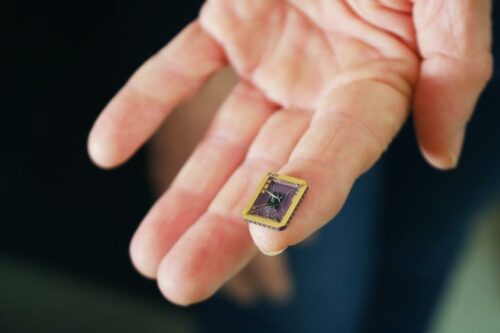Researchers at the Georgia Institute of Technology have taken a step to make graphene based electronics tech possible.

Researchers around the world believe that graphene has the potential to be the next-generation semiconductor material as a result of its exceptional properties, such as its high mobility that has been shown to be up to 250 times higher than that of silicon, low loss requirements, small scale and flexibility. But its potential faltered along the way, due to damaging processing methods and the lack of a new electronics paradigm to embrace it. With silicon nearly maxed out in its ability to accommodate faster computing, the next big nanoelectronics platform is needed now more than ever.
Researchers at the Georgia Institute of Technology have taken a step to make this possible. Walter de Heer, Regents’ Professor in the School of Physics at the Georgia Institute of Technology, and his collaborators developed a new nanoelectronics platform based on graphene — a single sheet of carbon atoms. The technology is compatible with conventional microelectronics manufacturing, a necessity for any viable alternative to silicon.
Researchers created a modified form of epigraphene on a silicon carbide crystal substrate to create a new nanoelectronics platform. They produced unique silicon carbide chips from electronics-grade silicon carbide crystals. used electron beam lithography, a method commonly used in microelectronics, to carve the graphene nanostructures and weld their edges to the silicon carbide chips.
This process mechanically stabilizes and seals the graphene’s edges, which would otherwise react with oxygen and other gases that might interfere with the motion of the charges along the edge. Finally, to measure the electronic properties of their graphene platform, the team used a cryogenic apparatus that allows them to record its properties from a near-zero temperature to room temperature.
Results showed that the graphene edge states were similar to photons in an optical fiber that can travel over large distances without scattering. They found that the charges traveled for tens of thousands of nanometers along the edge before scattering. Graphene electrons in previous technologies could only travel about 10 nanometers before bumping into small imperfections and scattering in different directions. Their discovery could lead to manufacturing smaller, faster, more efficient, and more sustainable computer chips, and has potential implications for quantum and high-performance computing.
Reference : Prudkovskiy, V.S., Hu, Y., Zhang, K. et al. An epitaxial graphene platform for zero-energy edge state nanoelectronics. Nat Commun 13, 7814 (2022). DOI: 10.1038/s41467-022-34369-4






